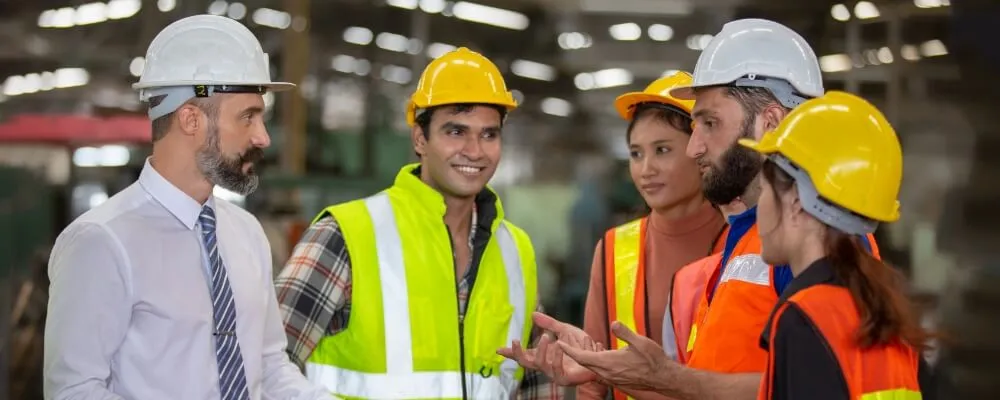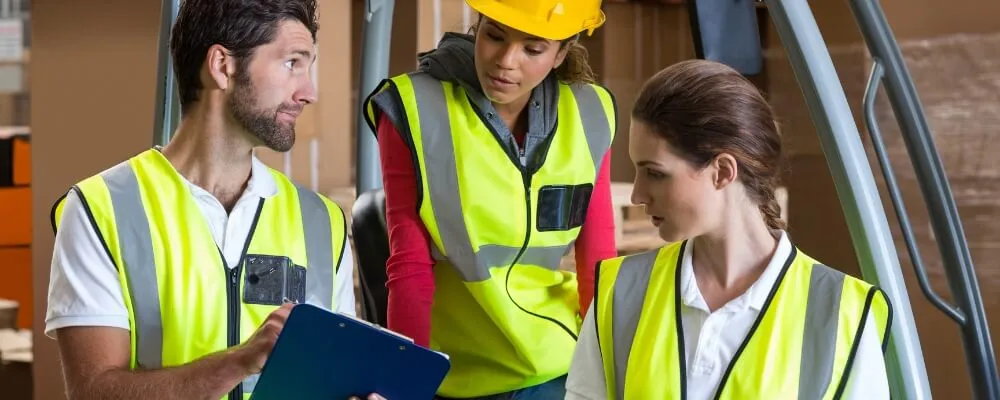Safety is paramount in every aspect of our lives, and it is essential to be aware of the potential risks and take necessary precautions to prevent accidents and injuries. With the world becoming increasingly fast-paced and unpredictable, safety suggestions are becoming more important than ever. Whether it’s at home, in the workplace, or even while enjoying outdoor activities, we should always prioritize safety to ensure the well-being of ourselves and those around us.
Safety suggestions encompass a wide range of advice and guidelines to minimize risks and promote a secure environment. From tips on fire prevention and home security to workplace safety protocols and road traffic rules, these suggestions act as a standard reference to protect us from harm. Following safety suggestions not only safeguards our physical well-being but also instils a sense of confidence and peace of mind.
Investing time and effort into implementing safety measures can significantly reduce the chances of accidents and create a safer environment for everyone. So, let us take a moment to consider the safety suggestions available to us and make conscious efforts to incorporate them into our daily routines.

What are Safety Suggestions?
Safety suggestions refer to recommendations or proposals made by individuals, often employees or stakeholders, aimed at improving safety within a particular environment or context. These suggestions are typically based on observations, experiences, or knowledge of potential hazards or unsafe practices. The primary goal of safety suggestions is to prevent accidents, injuries, or any form of harm, ensuring the well-being of everyone involved.
In a workplace setting, safety suggestions can be formal or informal. Many organizations have established systems or platforms where employees can submit their safety recommendations, which are then reviewed and, if deemed beneficial, implemented by the management or the relevant department. These suggestions can cover a wide range of areas, including:
- Operational Procedures: Recommendations on how certain tasks or operations can be carried out more safely.
- Equipment and Tools: Suggestions about the maintenance, modification, or replacement of tools and machinery to enhance safety.
- Work Environment: Proposals to modify or improve the physical workspace, such as better lighting, ventilation, or ergonomics.
- Training and Awareness: Ideas for training programs or awareness campaigns to educate employees about safety practices and risks.
- Emergency Preparedness: Recommendations on improving emergency response plans or drills.
Safety suggestions are invaluable because they often come from individuals who are directly involved in the tasks or operations and, therefore, have a firsthand understanding of the potential risks and challenges. By actively seeking and implementing these suggestions, organizations can create a safer environment and foster a culture where safety is a shared responsibility.
Benefits Of Getting Workplace Safety Suggestions From Workers
Getting workplace safety suggestions directly from workers has numerous benefits, as they are the ones who are most familiar with the day-to-day operations and potential hazards. Here are some key advantages:
- Enhanced Safety: Workers often have the best understanding of the risks associated with their specific tasks. Their insights can lead to more effective safety measures that prevent accidents and injuries.
- Increased Engagement: When workers are involved in safety processes, they are more likely to be engaged and committed to maintaining a safe work environment. This can lead to a stronger safety culture within the organization.
- Early Hazard Identification: Workers may identify potential hazards before they become issues. Early identification can lead to preventative measures that save time and resources in the long run.
- Diverse Perspectives: Different workers may have varied experiences and insights, leading to a broader range of safety suggestions. This diversity can enhance the overall safety strategy.
- Empowerment: Allowing workers to contribute to safety discussions empowers them and can increase morale. Workers who feel their input is valued are more likely to take an active role in other aspects of their work.
- Cost Savings: Implementing safety suggestions can lead to cost savings by reducing the number of accidents and associated costs such as medical leave, insurance claims, and equipment damage.
- Compliance with Regulations: Workers can help ensure that safety practices are not only compliant with regulations but are also practical and effective, reducing the risk of legal issues.
- Continuous Improvement: Safety is not a one-time effort but a continuous process. Worker suggestions can drive continuous improvement and innovation in safety practices.
- Reduced Absenteeism: A safer workplace leads to fewer injuries, which in turn can lead to reduced absenteeism and a more reliable workforce.
- Positive Public Image: A company known for its strong safety culture and employee involvement can enjoy a positive public image, which can be good for business and attract top talent.
To maximize these benefits, organizations need to have a structured process for collecting, evaluating, and implementing safety suggestions from workers. This should include clear communication channels, timely feedback, and a transparent system for tracking the outcomes of implemented suggestions.

Different Safety Suggestions Examples
Each work environment has its unique set of hazards and, therefore, requires tailored safety suggestions. Here’s a detailed explanation for each of the environments you’ve listed:
1. Safety Suggestions For Work (General)
- Ergonomic Workstations: Ensure that workstations are adjustable and provide ergonomic support to prevent repetitive strain injuries.
- Regular Breaks: Encourage taking regular breaks to prevent burnout and maintain high levels of concentration, which can reduce accidents.
- Safety Training: Conduct regular safety training sessions to keep safety protocols top of mind.
- Clear Signage: Use clear signage to indicate emergency exits, hazardous areas, and safety equipment locations.
2. Safety Suggestions For Plant
- Machine Guarding: Ensure that all machinery is fitted with proper guards to protect workers from moving parts.
- Chemical Safety: Implement strict protocols for handling chemicals, including proper storage, labelling, and disposal.
- Personal Protective Equipment (PPE): Require and provide appropriate PPE such as helmets, gloves, and safety glasses.
- Regular Maintenance Checks: Schedule and perform regular maintenance on all equipment to prevent malfunctions that could lead to accidents.
3. Safety Suggestions For Warehouse
- Forklift Safety: Enforce forklift safety protocols, including speed limits and right-of-way rules.
- Slip and Trip Hazards: Keep floors clear of debris and immediately clean up spills to prevent falls.
- Shelving and Stacking: Ensure that items are stacked securely and that shelving is stable and not overloaded.
- Fire Safety: Maintain clear pathways to fire exits and ensure fire extinguishers are easily accessible.
4. Safety Suggestions For Manufacturing Plant
- Lockout/Tagout Procedures: Implement lockout/tagout procedures to ensure machines are properly shut off during maintenance.
- Noise Control: Provide hearing protection and implement noise control measures to prevent hearing loss.
- Ventilation Systems: Ensure proper ventilation to prevent the accumulation of harmful dust or fumes.
- Emergency Drills: Conduct regular emergency evacuation drills to ensure everyone knows how to exit the plant safely in an emergency.
5. Workplace Safety Suggestions (General)
- Incident Reporting System: Create an easy-to-use system for reporting safety incidents and near-misses.
- First Aid Training: Offer first aid training to employees and have a well-stocked first aid kit readily available.
- Wellness Programs: Implement wellness programs that encourage healthy lifestyles, which can indirectly reduce workplace accidents.
- Stress Management: Provide resources for stress management, recognizing that stressed employees are more likely to make mistakes.
6. Safety Suggestions In The Office
- Cable Management: Implement cable management solutions to prevent tripping over loose wires.
- Ergonomic Chairs: Provide adjustable chairs that support posture to prevent back pain.
- Eye Strain Reduction: Encourage the 20-20-20 rule (every 20 minutes, look at something 20 feet away for 20 seconds) to reduce eye strain from computer screens.
- Emergency Protocols: Have clear protocols for emergencies such as fires, earthquakes, or active shooter scenarios.
Each of these suggestions should be adapted to the specific conditions and risks of the workplace in question. Regular risk assessments should be conducted to ensure that all potential hazards are identified and addressed with appropriate safety suggestions.
How Can You Use Safety Suggestions To Improve Workplace Safety
Using safety suggestions to improve workplace safety involves a proactive approach that includes several key steps:
- Encourage a Culture of Safety: Promote an organizational culture that prioritizes safety above all else. Make it clear that every employee, from the newest hire to the CEO, has a role to play in maintaining a safe workplace.
- Solicit Suggestions Actively: Regularly ask for safety suggestions through various channels. This could be during meetings, via suggestion boxes, through email, or using specialized software.
- Make It Easy to Submit Suggestions: Remove barriers to submission by keeping the process simple. Ensure that employees can submit suggestions anonymously if they prefer.
- Educate Your Workforce: Provide training on how to identify potential hazards and encourage employees to think proactively about solutions to these problems.
- Evaluate Suggestions Promptly: Set up a committee or designate individuals responsible for reviewing suggestions quickly and thoroughly.
- Implement Good Ideas: When a suggestion is found to be beneficial, implement it. If a suggestion cannot be implemented, provide feedback explaining why, which can be educational for the workforce.
- Provide Feedback and Recognition: Acknowledge the contributions of employees who submit suggestions and provide recognition when their ideas lead to improvements. This can be done through newsletters, bulletin boards, or meetings.
- Follow Up on Implemented Suggestions: After a suggestion has been put into action, monitor its effectiveness and make adjustments as necessary.
- Communicate Results: Share success stories of how suggestions have made a positive impact. This transparency can motivate others to participate.
- Review and Revise Processes: Continuously review the process of collecting and implementing suggestions to find ways to improve it.
- Integrate with Other Safety Initiatives: Combine the safety suggestions program with other safety initiatives, such as regular audits, safety training, and emergency drills.
- Set Safety Goals: Use the suggestions to set specific, measurable, achievable, relevant, and time-bound (SMART) safety goals.
- Leverage Technology: Utilize software and mobile apps that can track, manage, and facilitate the safety suggestion process.
By following these steps, you can leverage employee knowledge and engagement to create a safer work environment. Remember, the goal is not just to collect suggestions but to foster an atmosphere where safety is actively practised and continuously improved upon.

Top 10 Safety Suggestions For Every Workplace To Improve Safety
Creating a safe workplace is a dynamic and ongoing process that requires your active engagement. Here’s a deeper look into the safety suggestions that can help you contribute effectively to this goal:
1. Operate Tools and Machinery Properly
You must handle only those tools and machines for which you have received proper training and certification. Regular cleaning and maintenance of these tools are not just about prolonging their life but also about ensuring they operate safely and efficiently. Misuse or improvisation can lead to accidents, so always use machinery as intended. For instance, a forklift is designed for lifting heavy loads that might otherwise compromise your safety if attempted manually.
2. Promptly Report Unsafe Conditions
Vigilance in the workplace is your first line of defence against potential accidents. If you encounter a hazard, assess whether you can safely address it yourself. If not, it’s critical to report it to your supervisor without delay. This prompt action can be the difference between a safe workday and a preventable accident, keeping not just you but also your colleagues safe.
3. Consistently Wear Safety Gear
Personal Protective Equipment (PPE) is your personal armour against the workplace hazards you might face. Whether it’s gear that makes you visible, protects you from flames, or prevents slips, it’s designed with your safety in mind. In environments with particulates or chemicals, a breathing mask is not optional—it’s essential. Treat PPE as a necessity, not an inconvenience.
4. Maintain a Clutter-Free Workspace
A clean workspace is a safer workspace. Clutter can conceal risks and cause accidents, such as trips and falls. By keeping your area tidy, you’re not just creating a more pleasant work environment but also eliminating hidden dangers that could cause harm to you or your colleagues.
5. Stay Hydrated
Hydration is crucial for maintaining concentration and avoiding fatigue, which can lead to errors. Drinking sufficient water or appropriate liquids throughout the day is especially important in environments that are hot or physically demanding, but even in cooler settings, staying hydrated helps keep your focus sharp.
6. Adopt the Correct Posture
Long-term health and immediate safety can both be compromised by poor posture. When sitting, ensure that your workstation is ergonomically set up to support your back and neck and that your arms and wrists are not strained. When lifting, use your legs to bear the load and avoid back injury. Ergonomics isn’t just about comfort; it’s about preventing chronic injuries.
7. Take Regular Breaks
Mental and physical breaks are essential for maintaining peak performance. Periodic rest from your tasks can prevent both overuse injuries and mental burnout. When you return from a break, you’re more likely to work with increased efficiency and a reduced risk of mistakes.
8. Stay Alert to Your Environment
Awareness of your surroundings is key to avoiding injuries. This means being mindful of potential hazards, knowing the location of safety equipment, and ensuring that emergency exits are always clear. Encouraging the use of mechanical aids and proper lifting techniques among your peers also contributes to a safer environment for everyone.
9. Avoid Taking Shortcuts
Safety protocols and procedures are developed through experience and are in place to protect you. Taking shortcuts might seem like a time-saver, but bypassing these can put you and others at risk. Always adhere to the established safety guidelines and use tools and machinery only as instructed.
10. Keep Up-to-Date with Safety Procedures
Safety in the workplace is an evolving field, with continuous improvements and updates to procedures. It’s your responsibility to stay informed about these changes. If you’re unsure about a new safety procedure, ask for clarification. An informed workforce is a safer workforce.
By understanding and applying these detailed safety suggestions, you play a crucial role in creating a safer workplace. Each action you take, from maintaining your equipment to staying informed, builds a stronger culture of safety that benefits everyone.

